Coffee has undoubtedly experienced a certain renaissance worldwide, and especially within the United States. It has occurred steadily over the last two decades and has brought us to the caffeinated frontier on which we now find ourselves. As the interest in coffee has waxed, the methods used to produce a good cup of coffee have themselves become more refined and complex.
Cue: The French Press.

While many caffeine addicts remain attached to their drip coffee machines, another type of café has made headway among the enlightened crowd.
It used to be that in order to produce a truly exception cup of coffee, you had to know a barista who had been in the industry for several years. But boutique coffee production has since shifted to the home. It’s more common than ever to find an espresso machine, mocha, french press or drip coffee maker alongside other high quality kitchen products, as coffee aficionados search for more ingenious ways to manipulate the flavour profile of different roasts.
This leads to a often-asked question within the coffee community: which method is the best for brewing coffee?
It’s a big question, and we’re going to try unpack it below by comparing two of the most popular home-brewing methods – the French press and drip coffee. We’ll be looking at exactly what constitutes each method, the history of their development, the differences in flavor and texture of the resultant brew, and some good tips on how to make some of the most fragrant, delicious and eye-opening coffee variants of each.
French Press Coffee: What is It?
If you’ve never heard of it, it’s understandable that the French press may sound like a complicated martial arts move, capable of rendering a person immobile and tearing the breath from their body. That’s only half true. The French press is neither a martial arts move, nor is it complicated – but it’ll still take your breath away every time.
The modern French press as we know it today is a simple construction consisting of a large glass, steel or plastic cylindrical beaker with a plastic or steel lid and plunger which fits snugly into the cylinder. The plunger is equipped with a fine mesh filter to capture all of the coffee particulates, but not liquids, as it moves downwards.
It might be worth mentioning the French press actually doesn’t even deserve to be called French. The machine itself was designed by a man called Paolini Ugo and patented by Milanese designer Attilio Calimani in 1929 – a group of Italians.

It underwent several design modifications by another Italian called Faliero Bondanini, who developed his own patent for the machine in 1958, after which its popularity spread across Europe.
And this popularity has continued to spread, with French press makers becoming a commonplace item in kitchens all over the world. This has resulted in a number of different names for the machine, depending on where you purchase it. In Germany, for example, they call it a Stempelkanne, or stamp pot. In South Africa, New Zealand and Australia, it’s known as a plunger, and the coffee it produces as plunger coffee. In France it is called a cafetière à piston, but often shortened to cafetière, which is what coffee drinkers in the UK and the Netherlands call it too.
Drip Coffee: What is It?
Unlike it’s francophile cousin, drip coffee is a little more straightforward to understand as a brewing method for coffee. Drip coffee involves placing a filter over a container, filling the filter with roasted, ground coffee beans and then pouring hot water through the mixture. The resultant concentrate at the bottom is what we know as drip coffee.
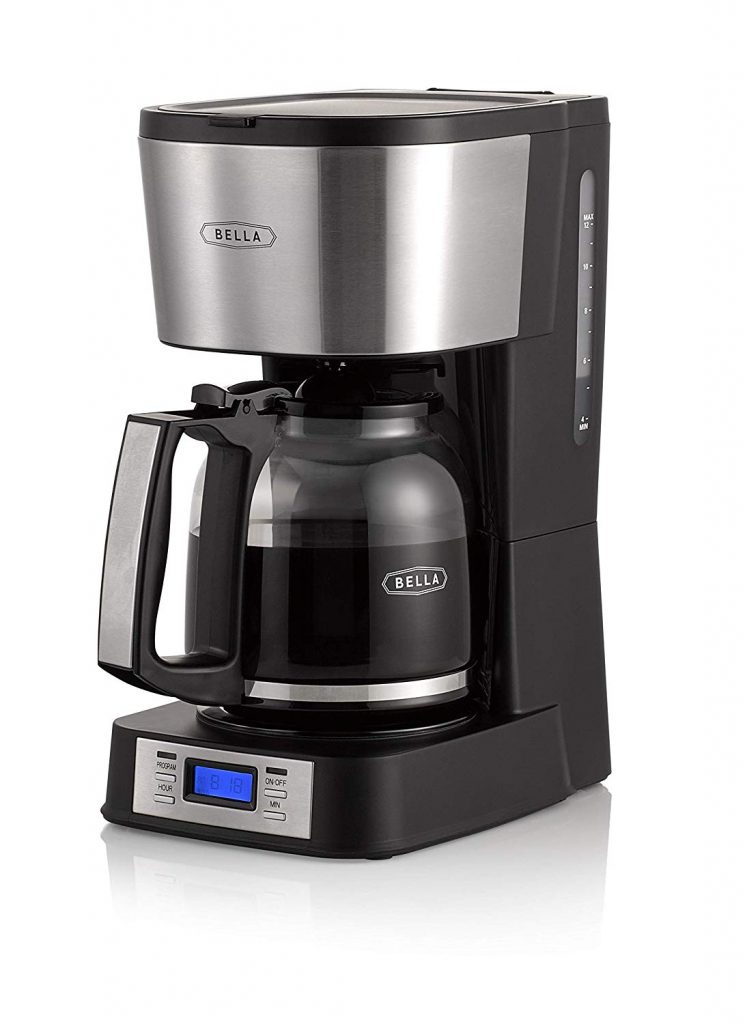
While many people will be more familiar with the drip coffee brewing process through the use of an automatic drip coffee machine, the more minimal, hands-on, pour-over method has become a vogue process in recent years.
Manual, “pour over” Drip Coffee brewing Manual Drip Coffee brewing in process
Unlike the French press, making drip coffee gives you slightly less control of the brewing process, especially with regards to brewing time. The resultant flavor is also difference since the water passes through the grounds rather than mixing with it for an extended period of time. However, it’s also very easy to do, which is perhaps what has led to its rise in popularity.
French Press vs Drip Coffee Maker: What Makes Them Different?
There are a couple of main differences between French press and drip coffee. The two big ones are the type of grind used, and the amount of control of the brewing variables each method affords you.
The French press requires a coarse grind since the grounds need to steep, whereas drip coffee requires a medium grind in order to let the water pass through it. Because both devices rely on filters in order to get an even and consistent cup of coffee each time, the grind of the beans needs to be just right.
Coarse Ground Coffee for French Press Medium Ground Coffee for Drip Coffee
Then there’s the amount of control of the brewing variables which each method allows for. Since the French press gives you the freedom to add as much or as little coffee as you’d like, and steep it for ten minutes or ten weeks, it gives you way more control over the final flavor of the coffee. Drip coffee, on the other hand, is going to give you a fairly consistent brew every time.
The natural oils within the coffee bean is the factor most responsible for the particular flavor of the coffee, and it’s these oils which get filtered out when coffee is prepared using a drip filter. Drip coffee uses osmotic pressure to drive the coffee concentrate out of the beans, which can result in an over-extraction when robs the coffee of its essential oils. The French press does away with over-extraction by using a much slower brewing process. Here, the grounds and the oils within them, are not merely saturated and then discarded. Rather, they’re allowed to steep, and the water as well as the heat draws out the oils and retains them in the final brew. It’s this extraction which captures the richness and depth of flavor for which the French press has become renowned.
All of the above variables affect the taste to a greater or lesser degree. While drip coffee, especially machines, can produce full-bodied brews depending on the exact model you use, more often than not it’s going to be the French Press which produces a stronger, fuller-bodied cup of joe.
The Science Behind the French Press: Here’s Why It’s Not the Same as the Drip Coffee Maker

With many other coffee-brewing methods, hot water is poured through your ground coffee beans, and how finely you’ve ground your beans is going to determine how quickly this water passes through. This ultimately has an effect on the flavor, strength, and bitterness of the end result.
A French press works slightly differently in that the brew yield, grind size and brew time are not married to how much water passes through them. With a French press, you’re much better able to control all of these variables, which in turn will give you a lot more control with regard to the final brew.
Unlike the pour-over method, which using hot water to extract flavor from the grind pretty aggressively, a french press is all about going low and slow. It allows for an even saturation of the grounds rather than an uneven stream of water passing through them, which in turn makes for a more balanced flavor.
Is French Press Worth the Extra Effort?
It all depends on how pedantic you are about the flavor of your first cup of coffee.
For many people the ease and convenience of drip coffee is one of the main reasons that they invest in either a drip coffee machine or a set of pour-over filters. There’s something to be said about simply pushing a button, waiting for a couple of minutes and receiving a decent cup of coffee in the morning.
In the same breath, if you’re a coffee aficionado who understands the difference between dark roasts and light, prefers single origin compared to multiple, and knows how to coaxe the best and most delicate flavors from your grind, then going the full mile with the French press is going to undoubtedly appeal to you.
Fifteen minutes waiting time is a small price to pay for a full-bodied, velvety-textured cup of the dark stuff.
Making Coffee with a French Press

- Start by heaping as much ground coffee into the bottom of the beaker as you would like. It’s important that the coffee is fairly coarse; if the beans are ground too finely they’ll simply slip through the mesh filter and into the liquid.
- Next, add enough hot water to the coffee and fill most of the beaker, but not all the way to the top.
- Allow the coffee to brew for as long as you would like, and when it’s at a satisfactory strength, place the lid and plunger on the top of the beaker.
- Push the plunger all the way down to the bottom of the beaker. Do this slowly; too fast and you’ll displace the coffee and it’ll spill everywhere.
- Pour out a cup and enjoy your handiwork.
I’m a French Press Noob – What Gear Should I Buy?
If you’re new to the French press and unsure what to buy, then we’ve got you covered.
Perhaps the best overall French Press is the Chambord by Bodum. It’s a classic French press that can trace its design all the way back to the fifties, but that still uses the same manufacturing processes today. It’s of the glass and stainless steel variety and is perfect for one or two servings with a 12oz capacity.
For a more premium model and one less prone to breakage, the Freiling double-walled stainless steel French press is the one to buy. Not only is it beautiful to look at, but with a capacity of 36oz, you’ll be able to brew enough coffee for a party of five or six.
The Best French Press Coffee Makers
Buying Tip #1: If you’re testing a French press in person, always make sure that the plunger fits snugly in the carafe. It should sink with gentle pressure without friction on the sides of the glass. If it doesn’t plunge properly, find a new French press.
Buying Tip #2: Not all French presses are made equal; some are bigger than others. Make sure you check the capacity of the French Press you’re buying to see if it suits your needs.
 French Press |  Pros, Cons & Caffeine Fiend Award |
|---|---|
 Bodum Chambord Check Latest Price | + Incredible all-rounded especially for the price. + Produced by perhaps the most trusted brand of French press makers in the world. – Difficult to clean. – Made of glass and so is quite fragile. ⋆ Best French Press Coffee Maker Overall |
 Frieling Double Wall Stainless Steel French Press Coffee Maker Check Latest Price | + Absolutely beautiful to look at. + Double-walled steel construction keeps coffee warm (or cold) for long periods of time. + Easy to clean and dishwasher safe. – Quite expensive for the ordinary consumer. ⋆ Best Premium French Press Coffee Maker |
 Mueller French Press Check Latest Price | + Excellent price. + Sturdy design and construction. + Also insulated and so keeps coffee warm for longer. – Not ideal for travelling. ⋆ Best Steel French Press Coffee Maker |
 KONA French Press Check Latest Price | + Great functionality and design. + Way less fragile than other glass French presses due to its plastic frame. – Difficult to clean. ⋆ Most Durable Glass French Press Coffee Maker |
 Bodum Brazil French Press Check Latest Price | + Produces great coffee for a decent price. + Sturdy functionality and built. – Not really that beautiful. – Made of glass and so is quite fragile. ⋆ Best Budget French Press Coffee Maker |
 Le Creuset of America French Press Check Latest Price | + Constructed of stoneware and is very sturdy. + Beautiful design that would enhance any kitchen counter. + Made by an extremely trusted and reliable brand. – Fairly expensive. ⋆ Best Stoneware French Press Coffee Maker |
 Bodum Travel French Press Coffee Maker Check Latest Price | + Ideal for travelling or commuting. + Very clever design. + Decent price point. – More of a gimmick than an actual French press. ⋆ Best Travel-Friendly French Press Coffee Maker |
How to Make the World’s Best Drip Coffee

- Start with a good grind. You’ll want to ensure that the grind is not too coarse or too fine, but somewhere in the middle.
- For a single cup of pour-over coffee you’ll want somewhere around 23g of ground coffee.
- Place the filter over your beaker or mug and prewet it with some hot water. This will allow the water to filter through a little easier while also removing a lot of the paper taste that filters can sometimes have.
- Remove the water you used to prewet the filter, then place the filter back on top of your container.
- Add the coffee grounds to the filter, then shake it around gently to even it out.
- Boil 400ml of water, take it off the heat, then let it rest for around 30 seconds.
- Pour just enough water to wet the grounds, then let the brew sit for 30 or 40 seconds. This process is called blooming, and it releases some of the gases trapped within the grounds. This allows for a smoother extraction, and will prevent the coffee having a sour taste.
- Pour the rest of the hot water through slowly, starting in the center then working outwards and then inwards in concentric circles. If you find that water runs too fast, try using a finer grind, and if it’s too slow, try a coarser one.
- Use a wooden spoon to gently stir the grinds and drain the last of the water.
- Remove the filter, let the coffee sit for a moment, and then it’s ready to drink.
The Best Drip Coffee Makers: A Buyer’s Guide
Braun, Cuisinart, Kalita, Bella, and Ninja — these are the brands to look out for when buying a drip coffee maker, not to mention Mr. Coffee for more budget-friendly options, or the Technivorm Moccaster if you’re willing to make a big investment.
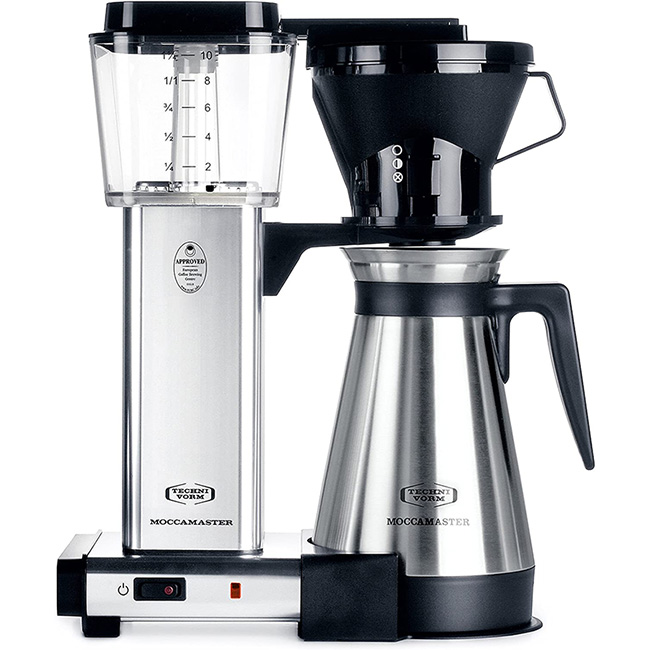
With regards to our value picks, the Bella 12 Cup Coffee Maker comes out on top. Not only is it affordable and stylish enough to fit in any kitchen, but it can brew consistently great cups of coffee in only nine minutes.
And if you’re more serious about pour-over drip coffee, then you should opt for the Technivorm, or the Kalita Wave 185 Dripper as well as the Kalita Wave Series 500. You can also bolster your Kalita purchase with Kalita’s wavy filters in order to produce a fast and incredibly delicious cup of coffee.
Buying Tip #1: When it comes to drip coffee machines, always ask about the ease of assembly, and the ease of cleaning. You’ll need to clean the carafe and brew basket very often, and you might want to deep clean the entire machine every now and then. A good buy should be easy to take apart, clean, and re-assemble.
Buying Tip #2: Check the volume—like many other types of coffee makers, drip coffee machines come in different brew sizes that are measured in ounces. A ‘normal’ cup of coffee is about 4 fluid ounces (118 ml), brewed with 5 fluid ounces (or 148 ml) of water. So, for example, since the Technivorm Moccaster has a volume of 40oz, it can brew enough coffee to fill up to 10 cups.
Single serve drip coffee makers usually have different cup size options, ranging from 4oz to 12oz per cup.
An Extra Step for Making Great Coffee with Either the Drip Coffee Maker or The French Press
Even if you’ve grabbed the latest French press or greatest Drip Coffee Maker, it doesn’t mean there aren’t some additional steps you can take in order to up your coffee game to the next level. Coffee, after all, is about more than just the device used to brew it.
There are two important things that will change your morning coffee routine for the better: your bean and your grinder. Choosing a well-roasted coffee bean is the basis for getting the most delicious-tasting coffee possible. Of course, this is a matter of taste, so you’ll have to switch it up until you find one that you really like.
Some favorites include:
- Organic Whole Beans by Death Wish Coffee – the perfect bean for balanced and bold flavors.
- Super Crema Coffee Beans by Lavazza – Italian, affordable and full-bodied, Lavazza consistently puts out a great roast.
- Gourmet Signature Blend by Don Pablo – Very smooth and with low acidity, Don Pablo’s beans are the best blend from Colombia, Guatemala, and Brazil.
- Beyond Black Roast by Black Rifle Coffee – A robust and smokey blend by veteran-owned coffee company Black Rifle Coffee.
Now that you have the beans you’ll want to get a grinder. It doesn’t have to be an expensive electronic one with different gauges and measuring tools; a hand grinder will work fine. The important thing is that you have a tool that can produce consistent grinds that range from fine to coarse depending on your needs. Check out our favorites below for all budgets:
- Hero Manual Coffee Grinder – For a no-frills grinding experience that won’t break the bank but will still produce a consistent grind, Hero’s manual coffee grinder is hard to beat.
- KRUPS GX5000 Burr Coffee Grinder – This affordable electric grinder by KRUPS will let you get the precise grounds you need while still leaving some cash in your pocket for another bag of beans.
- The Smart Grinder Pro by Breville – If you’ve got the money to spend and want the absolute best when it comes to grinding beans, the Smart Grinder Pro by Breville is hard to pass up. With over 60 grind functions and a design geared towards preserving the essential oils within the coffee bean, this machine is worth the price.

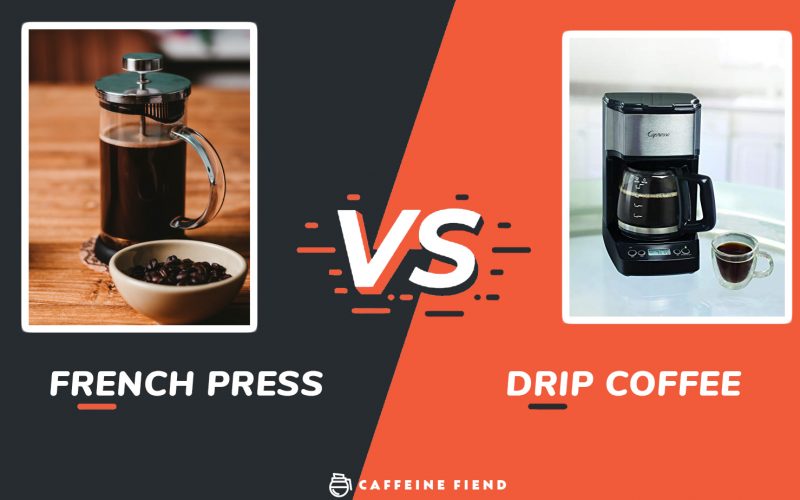
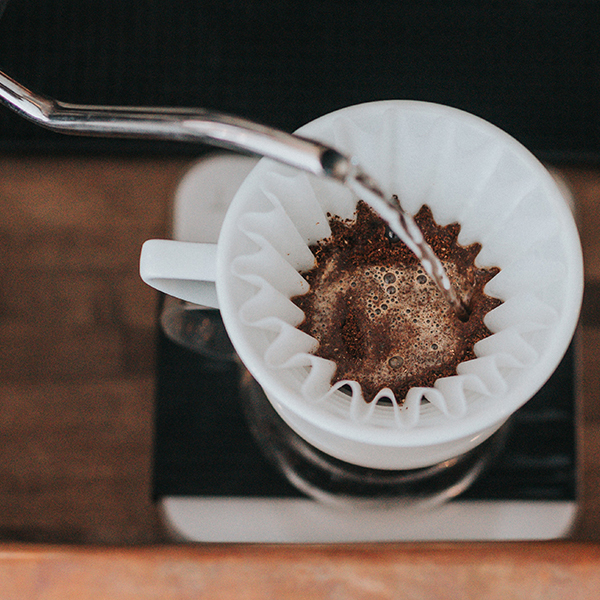
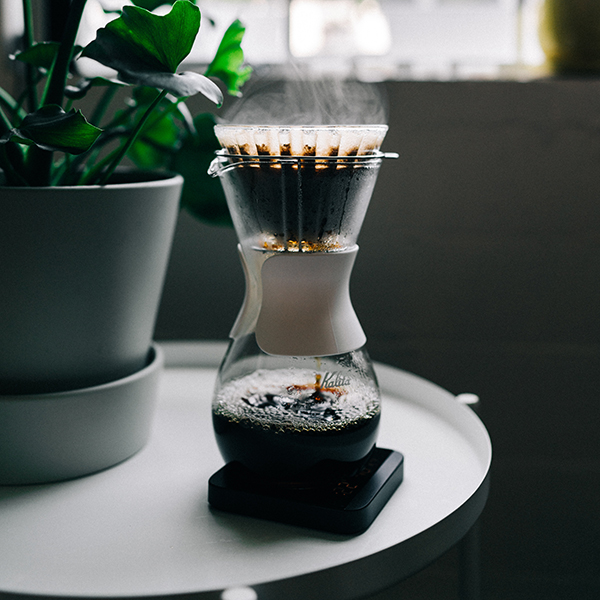
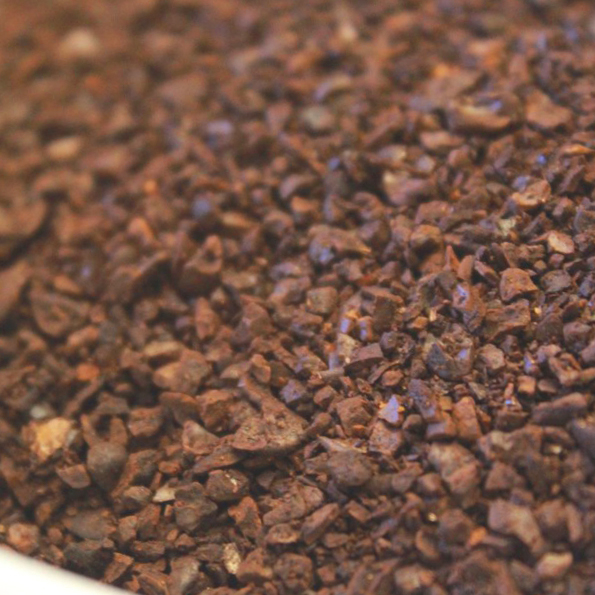
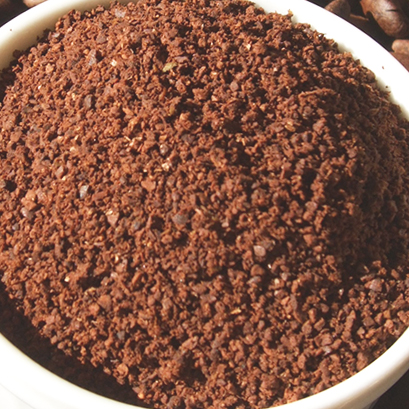
3 comments
What about the percolator.
The Bialetti for example?
Hey Anton!
In this article we compared French Press to Drip Coffee.
We haven’t done any comparisons with the percolator yet, but if you check out our Moka Pot Guide: https://caffeinefiend.co/the-best-moka-pot-6-pots-ranked/ you’ll see that we’re well aware of how good Bialetti is 🙂 (it took 3 of the top 6 ranks)
Are there any specific comparisons vs the percolator/moka pot that you’d like to read about?
So much for taste…how about the dark side of using a French press? The French press method does not use any coffee filter. The French press does produce a full bodied coffee flavor, but according to Harvard Health it can also raise your cholesterol levels, especially the bad LDL. For this reason many physicians suggest using a brewing method with filters.